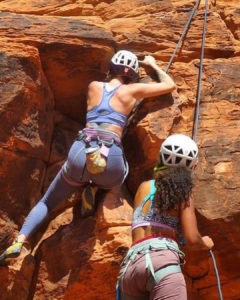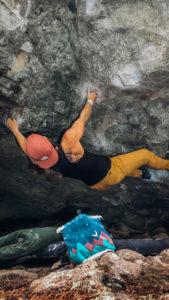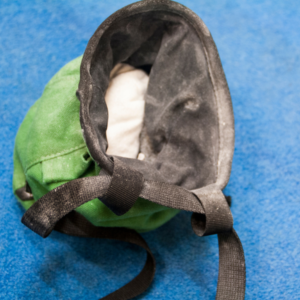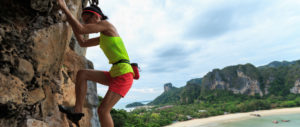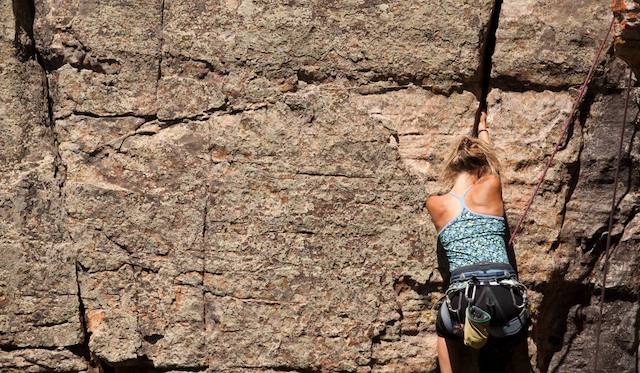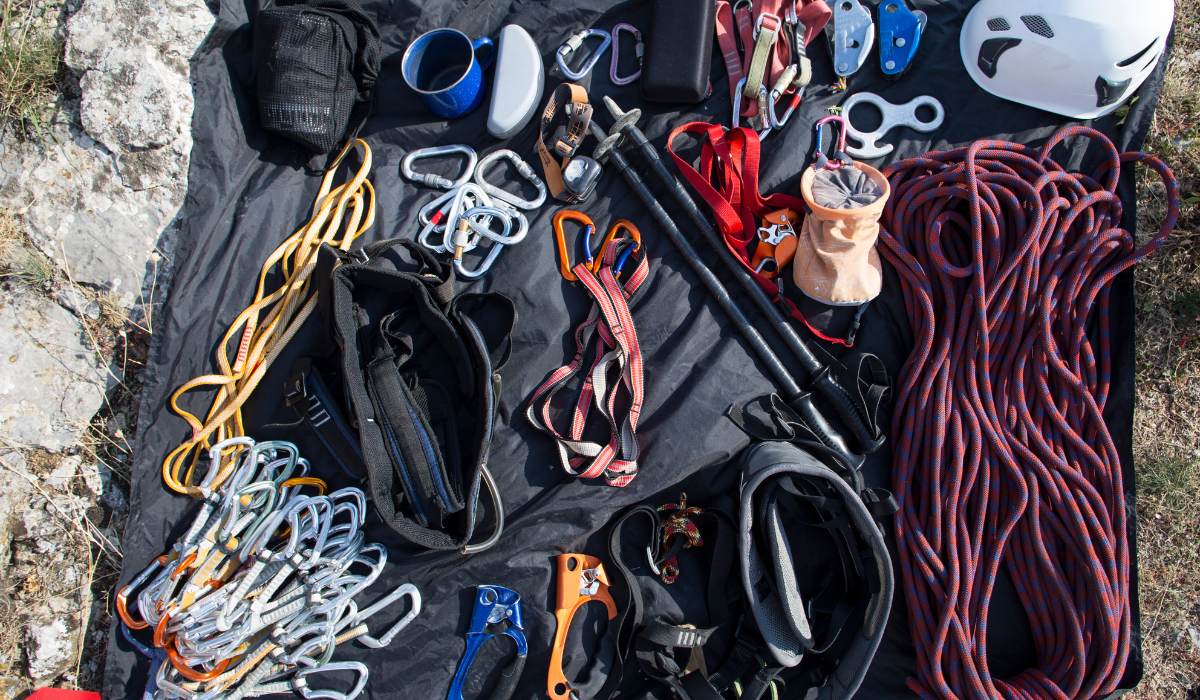Are you into rock climbing? Have you been doing it for years? Or are you still a beginner?
On your climbing journey, you may be focused on challenging yourself and achieving the goals you have set. But as you spend more time with other climbers, you can’t miss the different language only climbers understand.
As with all sports, there is a lot of jargon being used in rock climbing. While knowing rock climbing terms is not necessarily essential, it helps you better appreciate the sport and better ensure everyone’s safety by learning the right names for various climbing gear and actions.
At the same time, you will have better communication with other climbers, especially the more experienced ones. It will prevent confusion and even possible miscommunication.
To help you get started, here are some common climbing terms from the rock climbing community. You’ll learn some of the most used terms, like these:
Anchor
Belay
Crag
Free Solo
Lead
Pitch
Rappel
Sport Climbing
Trad Climbing
Keep scrolling for the full list of common climbing terms…
Aid Climbing
This is when climbers use a gear or tool to hold their weight as they climb up a wall or rock or pull themselves up.
Anchor
An anchor is a belay/rappel point, which is generally atop a pitch, marked by fixed protection (like bolts) or built using removable protection.
Approach
Approach refers to the route that a climber hikes, runs, skips, or walks to the base of a climb.
Arête
This refers to the edge or outside corner that creates an acute angle (90 degrees). For example, the cleaved edge where two cliff facets meet at a right angle like a building corner, or an arête-like or flying buttress such as Rebuffat’s Arête in Eldorado Canyon. Difficult arête routes exploit heel hooks, toe scums, slap moves, etc.
Armbar
This is an off-width technique wherein the climber inserts their entire arm into a crack and place their palm/wrist/forearm flat against one wall. The elbow is cammed against the other.
Auto-Lock
Auto-lock refers to things that securely lock without the need for manual locking. Auto-lock is often seen in belay carabiners, which lock on their own once the carabiner gate is closed.
Backstep
Backstep is when you press your shoe’s external edge onto a foothold and drop the knee lightly, thus bringing the sole’s bottom-outside in contact with the rock and your hip in; often opposed against your other foot’s big toe, off which you resolutely push. Unlike a Lolotte (drop knee), the less aggressive backstep typically exploits footholds below knee level.
Backup
Backup refers to any additional protection that is added to provide redundancy to an anchor.
Barn Door
Barn door is an off-balance move that causes a climber to pivot on two points of contact, The result looks like you are opening a barn door.
Belay
To belay is to secure the rope while your partner climbs. You can belay a leader, a second, or provide an on-the-ground top-rope belay.
Today, belaying involves using a belay device that introduces friction into the system to help arrest a fall; the guide hand stays on the rope above the device, while the brake hand clasps the rope exiting the device so it is ready to catch a fall.
The one who belays is the belayer, while the imaginary working area (personal space) the belayer needs to safely operate is the belay box.
Belay Device
A tool, usually a metal device, that a belayer uses to control the rope.
Beta
Beta is a specific, blow-by-blow description of a sequence or climb. More generally, it refers to information about a climb or climbing-related (or any) topic.
Big Wall
A long route that takes many pitches, or lengths, of rope to ascend is called a big wall.
Biner
Short for “carabiner.”
Bolt
A bolt is a closed ring made from strong metal. Bolts are the things a climber drills on rocks to serve as protection as they complete the route. Bolts expand in the rock, making them secure.
Some climbers pre-place bolts in a climbing route to serve as anchors. This route is referred to as a bolted route.
Bomber
Generally in rock climbing, “bomber” means something super solid. It can be a rock or protection of such peerless quality and/or reliability that it could withstand a hypothetical bomb blast. For example, Yosemite granite is bomber, while Fisher Towers Cutler sandstone is not.
Bouldering
Bouldering is climbing low to the ground and without using a rope. Typically, it includes the use of a crash pad for protection.
Brake Hand
The hand that holds the rope when belaying.
Bucket
The most secure of handholds is a bucket. It is a hold so deep, incut, and big it is like grabbing a bucket lip.
Cam
Short for spring-loaded camming device (SLCD), a cam is any trigger-activated protection unit employing spring-loaded cam lobes in opposition.
Carabiner
A carabiner is a snap-link connecting the rope to your protection. Carabiners are the fundamental building blocks of fifth-class climbing. (also called a “biner”)
Chicken-wing
A chicken-wing (noun) is a creased elbow jammed horizontally or even upward into an off-width or dihedral corner. As a verb, it can either mean to use the hold specified above, or to be so pumped that your elbows, instead of pointing toward earth, stick up and out like chicken wings: Bawk-bawk!
Chimney
A chimney refers to a crack so wide or deep that you can crawl inside and climb up between its two walls. It is named for its likeness to the inside of a fireplace chimney.
To chimney (v) is to shuffle up a chimney by pressing your back/buttocks against one wall, and, in an Egpytian-like position, to bridge and oppose your feet, alternating which foot presses which wall. You might also bring your hands palm out, fingers down against the opposite wall.
Clean
Clean refers to an action. When someone says clean a route, they mean you should remove all protection that the lead climber has placed. The second climber or the one following the lead climber has the responsibility of cleaning the route. They can do this as they make their way up or as they are rappelling back down.
Climbing Chalk
Rock climbers use climbing chalk to keep their hands dry as they climb. Chalk is often kept in a chalk bag, which is typically hand-sized and can be closed with a drawstring. Chalk bags are either worn at the back of the climber’s waist belt or attached to the back of a climbing harness.
Crack Climbing
As the name suggests, this is the act of climbing continuous cracks in rocks, reoccurring specific techniques and protection methods.
Crag
A crag is a steep or rugged cliff or rock face, or the term for a small climbing area.
Crash Pad
A crash pad refers to the cushion foam that helps climbers have a soft landing when they fall off a rock while bouldering. As the name suggests, it’s a pad where the climber can crash safely. Crash pads are often placed under climbers and used to cover rocks, uneven ground, and stumps.
Crimp
This is a small edge upon which you crimp your fingers, i.e. bend your digits to exert pressure on the knuckles, bringing your thumb against your index finger to close the grip.
Variant: Any small edge is a crimper, while a crimp-intensive climb is crimpy.
Crux
A crux is a route’s most difficult passage or sequence.
To crux (verb) doesn’t always mean to reach a route’s crux, but instead to redline anywhere on a climb.
Daisy Chain
Daisy chain is a runner with multiple loops for use as an adjustable anchor. Often used by aid climbers.
Deadpoint
Deadpoint is the high point—the moment of weightlessness—achieved by a dynamic move upward, whether or not the body completely separates from the rock; or a movement that incorporates this type of lunge, with the feet typically not leaving the rock (as they do in an all-out dyno).
Descender
A descender refers to a device used for rappelling.
Dihedral
Dihedral is a perfectly cleaved corner that opens at 90 degrees.
Dirt Me
Dirt me is climbing speak for “lower me down,” after finishing a lead or top rope climb.
Down Climb
Climbing down a route or to reverse the moves one just did is called down climb.
Dynamic Rope
There are different types of ropes used in rock climbing. A dynamic rope can elongate or stretch when force is applied, which allows it to absorb the impact of a fall.
Dyno
A “dynamic” move in which the climber springs for a distant hold, his feet leaving the rock. Ideally, the hold is grasped at the deadpoint if the motion is vertical or nearly so.
Elvis Leg
An Elvis leg is a leg shaking uncontrollably during a climb. It is usually due to nerves or other contractions of the muscle.
Edging
Edging is an important foothold technique. It is applicable for small footholds. Edging occurs when the climber places weight on thin or small footholds using the edges of their feet instead of the soles.
Figure 8 Knot
The most common knot used to attach the climber’s harness to rope is the figure 8.
Fingerlock
Fingerlock is a hold formed by inserting your digits in a finger crack and then twisting, with your weight coming onto the lowest cammed knuckle. Fingerlocks can be done either thumb-up or thumb-down.
Fist Jam
First jam is when you place your fist frontally inside a crack, then clench it to cam it in. It can be executed with your palm facing toward or away from you.
Flag
To flag is to drape one leg crosswise across the other, usually behind it (an outside flag), while pointing the flagged leg’s toe into the rock to counter a barn door. With an inside flag, your flagged leg crosses between the other leg and the rock, generally engaging the shoe’s outside edge.
Flare
A flare is any crack, hole, pod, etc. wider at the mouth than in the back, thus flaring outward. The worst kind is a bottoming flare, both cranky to jam and difficult to protect, though offset cams (different size lobes) make the latter chore easier.
Flash
To flash is to send a pitch first try, but with specific beta (perhaps running beta from a friend on the ground).
Free Climb
Free climb refers to a climb using only hands and feet on the rock. Rope is used only for safety and is not relied upon for upward progress.
Free Solo
Free solo is to climb without rope or protection.
Gaston
A reverse lieback in which the fingers face inward, as if prying open an elevator door, is a gaston.
Grigri
The most popular belay device with an auto-locking mechanism to catch a climber’s fall is called grigri. It is widely used by indoor and sport climbers.
Hand Jam
Hand jam is a crack technique in which you slot your hand and cup the palm, wrapping the thumb underneath or beside your fingers, to jam against the crack’s walls. A secure hand jam can provide a chance to dead-hang and de-pump.
Harness
The harness is one of the most important gears that climbers need. It is a strong belt that allows climbers to attach themselves to a rope. This piece of webbing is worn on the waist. Belayers also use a harness to secure their belay device.
Heel Hook
Heel hook is the jamming of your heel onto or around a rock feature and pulling. Heel hooks can be lateral and below you, as in around an arête; and also horizontal and frontal, as in on a ledge in front of your face. Hooks are common on overhanging rock, and rock shoes have evolved accuracy-augmenting advents like ribbed and suction heels.
Heel-toe
Heel-toe is a frontal heel hook that cams the big toe against an opposing lip or rooflet, locking you in for a rest on overhanging terrain, or acting as a lever from which to reach.
An outside heel-toe involves stepping one leg through, dropping your heel onto a hold, and then camming your shoe’s pinky-toe side.
Hex
A hex is a hollow, slung, or wired, six-sided chock placed into a rock crack as protection for climber on lead.
High-step
High-step is to bring one foot high and stand frontally on the big toe, recruiting the quadriceps muscle to push and reach.
Intermediate
A hold not locked off but merely held, en route to a better handhold above with the same hand is called intermediate.
Intermediates can be faux holds that let you scootch your hips higher or otherwise adjust your body position.
Jam
To jam is to wedge a body part into a crack on a rock climb in order to put weight on it and move upward. Includes fingers, hands and feet.
Jug
A bucket hold so incut and hand-friendly, it is like the handle on a one-gallon jug (noun); to jumar a fixed line (verb).
Jumar
The original mechanical ascender, often applied to all brands of ascenders. Also the term for using an ascender.
Kneebar
Kneebar is a leg “hold” created by camming your knee/lower thigh up under or against some blocky, cracky, or roofy feature in opposition to your foot.
A solid kneebar might let you take off both hands and de-pump, even on overhanging stone; however, it also requires calf flexion and core tension.
Kneebar aficionados wear neoprene kneepads with sticky-rubber patches, held fast by duct tape and spray-on adhesive; this, in turn, requires diligent leg shaving.
Lead
A lead refers to starting with the rope on the ground, climbing by clipping into protection points on the way up.
Lead Climbing
When ascending a route in a group, the first person is called the lead climber. They do not have a rope hanging from an anchor.
In lead climbing, the first climber clips the rope into the pieces of protection and places their gear as they make their way up.
Lieback
Lieback refers to leaning horizontally (sideways) off a hold, often a crack, and walking the feet high in opposition.
Mantel
Mantel is the pressing down on a ledge or boulder lip with one or both arms, recruiting the triceps, while you rock over your foot; short for mantelshelf. A beached whale is a poorly executed mantel.
Variant: Lip experience (a high, heinous mantel or similar transition from steep to slabby terrain atop a boulder problem)
Usage: “Gym boulderers have no clue how to mantel. Get them outside and watch the fish-flopping begin!”
Multi-Pitch
A climb longer than one rope length requiring a climber to setup a belay station and bring up their partner before preceding higher is called a multi-pitch.
Nut
A nut is a passively (versus actively, as with cams) seated, removable metal wedge.
Nut Tool
A small, hooked pick used to remove protection when seconding (following) up a climb is known as a nut tool. It is used on passive and active protection pieces.
Off-width
Off-width is a wide, off-sized crack too big for fist jams yet too narrow to be a squeeze chimney. Off-widths are generally 4 to 12 inches wide and require hand-fist stacks, kneebars, Leavittation, etc.
On-sight
On-sight is to climb a route on your first try with no prior knowledge of the beta.
Passive Protection
Protection refers to cams, nuts, hexes, and other similar tools used by rock climbers as they ascend. Passive protection pieces are those with no moving parts. These are often made of aluminum and soft metal wedges. They are attached to a loop of steel, wire, or cord placed in narrowing cracks and restrictions found in the rock.
Pitch
Pitch refers to a rope length; more slangily, a climb (“Get some good pitches in today?”). This is another unit of climbing measurement that, unlike standard units of measurement (meters, feet, etc.), remains open to fluid interpretation. If simul-climbing (the alpinist’s day out in the mountains), a pitch can be climbing before the leader stops, builds a belay, and brings up his second so they can exchange roles. Thus a simul-climbing “pitch” can be 1,000 feet on rock, or even 10,000 feet on the face/slope of a mountain. In sport climbing, a pitch can be as miserly as 15 feet.
Alternatively, to pitch out a climb describes the way a multipitch route is done, i.e., how the individual pitches are broken down. As a verb, to pitch means to fall.
An inset hole, divot, or rock hollow is called a pocket. Pocket climbing, as often found on welded tuff and limestone, isolates finger tendons, so can be tweaky. Many of the original (1980s) sport areas featured pockets: From Buoux and the Verdon Gorge, France, to Smith Rock, Oregon.
Pump
That tight, weak, swollen feeling in the forearms that comes, while climbing, from the accumulation of lactic acid combined with restricted blood flow is called pump. It is much easier to get pumped than to de-pump. Also, as a verb, to sag to a straight-armed position and then cock to initiate a dyno or deadpoint.
Quickdraw
A quickdraw is a bar-tacked nylon runner (dog bone) with a loop on each end to accommodate a carabiner. It is used to clip the rope into protection while reducing rope drag.
Rack
The climbing gear carried during an ascent is known as a rack.
Rappel
To rappel is to descend down the length of a rope.
Ratings
Ratings are numerical (and sometimes letter) values given to a rock climb to reflect its relative difficulty.
Redpoint
To free-climb a route sans falls, after any amount of rehearsal (i.e., not on your first try), is called a redpoint.
Runout (Run-out)
The length of rope between each protection piece; more specifically, a runout is any notable (10 feet or more) protectionless stretch. Most run-out routes assume danger grades.
Send
Send refers to climbing a boulder or ascending a route cleanly from bottom to top without falling or taking rests on placed gears and ropes.
Slab
A climb that is less than vertical, typically relying on friction to climb rather lots of holds, is called a slab.
SLCD (Spring-Loaded Camming Device)
SLCD is a piece of active climbing protection composed of a number of cams on a stem with a trigger bar. When the bar is pulled back, the cams compress to a size small enough to fit inside a crack or pocket. When the bar is released, the cams flare outward and rotate/wedge into place, providing protection. The rope is then clipped with a runner to this piece of protection.
Sling
A sling is a sewn, typically shoulder-length nylon runner used to clip in long to protection, build anchors, carry gear, etc.
Sloper
A sloper is a downsloping handhold that relies on skin friction and an open-hand grip. Slopers can prove unusable in poor (hot and/or smarmy) conditions.
Smear
To smear is to apply your entire forefoot (and not just toe) to the rock, often while slab climbing, stemming, or on large, sloping features.
Sport Climbing
Sport climbing refers to the type of gymnastic face and overhang free climbing. The climbs typically having fixed protection like bolts (usually equipped top down with a power drill). Another key feature is the acceptance of hangdogging. Brits for some reason call it sports climbing.
Squeeze Chimney
Bigger than an off-width but smaller than a chimney, a squeeze chimney (12 to 18 inches or so) is a crack up which you must wriggle; these are infamous for provoking claustrophobia. A wise climber will ensure that his torso squeezes through unimpaired, even on a full in-breath.
Stem
To stem is to splay and oppose your legs, {sansV}-like, across a dihedral or to otherwise enter a splits position.
Top Out
It is when the climber reaches the top of a climbing route and walks back to the base through a trail instead of rappelling back.
Top Rope
Top rope is a rope passed through a fixed anchor at the top of a climbing wall or cliff, with each end tied to the climber and the belayer at the bottom. “Top-roping” is the term for this type of climbing.
Traditional Climbing (Trad Climbing)
Before sport climbing, all climbing was traditional climbing, in which you started on the ground, placing pro as you went. Today’s slightly modified meaning seems to encompass all gear-protected (natural) leads. (Headpointing is rad trad: “Radical” trad climbing using sport-climbing tactics.) Picture someone walking up to a 5.9 X off-width and leading it from the ground, no falls, no hanging, and perhaps only minimal whimpering: That guy is a core, experienced trad, tradster, or trad dad.
Variant: Trad Climbing
Trad Climbing
Trad climbing is another name for traditional climbing (see Traditional Climbing).
Undercling
Undercling refers to any hold used by turning your palm upside-down, as if receiving alms, and walking the feet up.
Variant: Undercut.
These are only some of the terms you’ll use in the rock climbing community. As you continue your journey as a rock climber, you’re going to encounter many more unique words and concepts!



